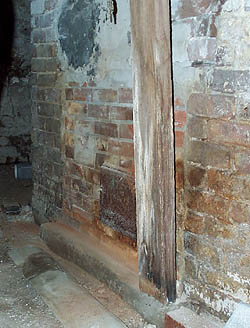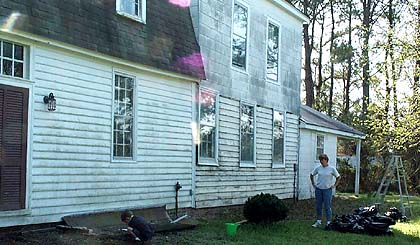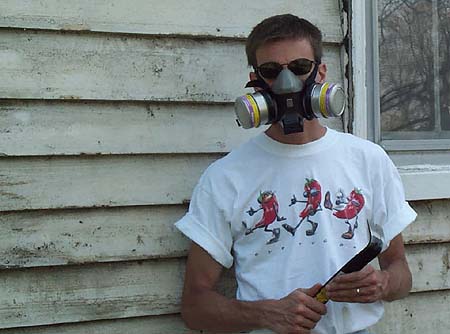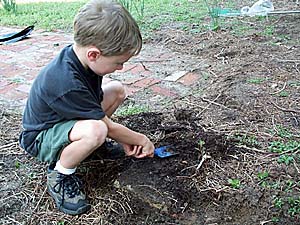ONLINE JOURNAL
These journal entries track our progress as we undertake our adventure of restoring this very old home. The main reason for keeping this journal on the web is that we have found that there are very few resources (books or websites) that follow all of the trials and tribulations of restoring an old home...from start to finish.
William's vision for the restoration of Enon Hall. (Hopefully it won't come to this.)
March 4, 2000
Also spent a lot of time in the cellar looking for clues about the way this old house grew. My personal opinion is that the original Dutch Colonial portion of the house was actually built in two stages...first in the 17th century and then expanded in the 1740s. The cellar seems to bear this out. Half of the cellar floor is brick, the other half was obviously dug out at a later date. The chimney base at one end is much more massive and crudely assembled than the chimney at the other end. The newer of the two chimneys also had a fireplace in it that appears to have been bricked in sometime in the 20th century. Probably was used for cooking at some point. Even the stone hearth is still in place. -- Bill
March 25, 2000
Great weather for working at Enon Hall. Today we tackled the house itself for the first time, carefully stripping asbestos siding off of the front of the 19th century addition. We took the prescribed precautions and worked carefully to remove them with as little breakage as possible. The first couple came off easily...then, of course, things got tougher and I broke quite a few into bits before working out a system. By the time I had gotten to the top of the first floor, I was able to remove shingle after shingle without breaking them at all.
We carefully double-bagged the shingles in heavy gauge plastic bags. Lesson for next time...it doesn't take a whole lotta shingles to add up to a very heavy bag. The 19th century clapboards underneath are in great shape and surprisingly thick. All they need is scraping, caulking, and painting. So exciting to see that awful asbestos siding coming off!
We finished off the day with a nice kayak tour up the creek. -- Bill
|






